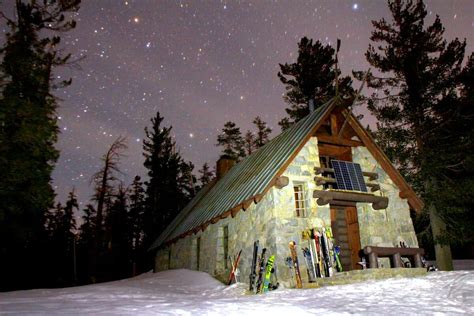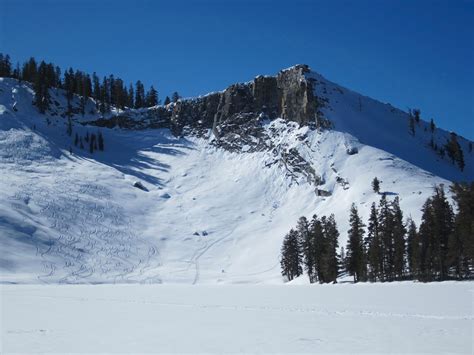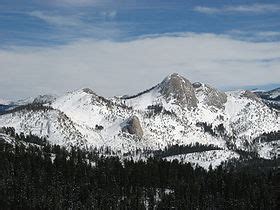
Badger Pass Ski is a small commercial ski resort within Yosemite National Park. At 7,000 feet, Badger Pass, was my home during the winter of 1972-1973. During that winter season of significant snowfall, I worked by night and skied by day.
I had escaped working food service in Yosemite Valley, and commuted with many other employees from the Valley to Badger during the early season in November. Management observed my work and, needing a night worker to live on the hill, asked me to take the job. I jumped at the opportunity to live on the mountain.
My night work was lodge cleanup; vacuuming, mopping, sweeping, emptying the cans. Commencing at four p.m., before the rubbish froze to ground, I worked diligently for about five hours completing the cleanup. On most nights I was in bed by midnight. I earned a paycheck of $49.47 per week, also room-and-board, medical insurance, plus unlimited skiing. The cook, Adolf, made our meals, a sweet Christian German immigrant.
My bed was within an open dorm, a virtual barracks, with four other night crew. I was by far the youngest, not quite nineteen years old, christened with the nickname ’sprout’ soon after revealing my age. Sharing the dorm were three guys in their mid to late twenties, they appeared so experienced at the time. Tom McCabe, the Viet Nam veteran; Jim Miller, a self assured fellow; and Martin, the quiet one. These men were slope groomers, those people who drove snow tractors during the night to make the ski runs easily skiable the following day. There was one other fellow, Bill, a down and out fellow about 50 who also cleaned during the night. Bill slept in the ‘tiny tots’ daycare room. I was the only person who spoke with Bill.
My ski season commenced with alpine skiing, something I knew. However, I was drawn to the emerging cross-country skiing scene. Early in winter I purchased a new X-C ski rig: 210 centimeter wood skis, (with lignostone edges!), ankle high ski shoes and bamboo poles that rose to my armpits. Quite a rig!
I was in top shape from years of swim training, hiking, running and bicycle riding. Ski touring came naturally: the technique, glide and extension was apparent. But I could not turn, did not know how, nor did many others; there were no videos in 1972 nor how-to books. I could step-turn and skid turn, but both methods only altered direction; not actual turning. From the top of a slope I had no actual method to reach the bottom without traversing, stopping and changing direction while stationary.
About New-Years time of 1973 I met a fellow who was a bit of an expert in X-C skiing. I observed him gliding downhill and turning, while internally remarking “what is going on there? THIS I must learn.”
I soon found the guy in the lodge, and inquired about what I observed.
“That is a telemark turn.”
‘A what?’ I think. The next words quickly followed, “Can you show me how?” He was taken by my young enthusiasm and agreed to teach me the ‘”tele” turn.
We two soon ascended a moderate slope and discussed the technique. Before taking a turn he explained the skier effectively genuflects, shallow, thereby extending one ski forward of the other: a lead ski and a trailing ski while crouched. In such position most of the skiers weight is loaded toward the lead ski. The trailing ski is lagging with light pressure applied from the toes, while the heel is lifted free. In this rather unnatural position the skier “stems” (slightly angles) the lead ski forcing the two skis form a banana shape along the uphill edge. This ‘banana’ shape arcs the skier into a smooth carving turn. Sounds tricky because and it is!
My instructor demonstrated a single right-to-left turn and then stopped. He beckoned me to give a try. Moving in traverse, with arms akimbo, I genuflected correctly are carved my first tele-turn. Wow! Wow! Wow! Oh yeah!
I glided past my mentor completely the turn. Now while traversing in the other direction the thought crosses, ‘what do I do now?’. The next instant I was intuitively transitioning trailing ski to lead, and genuflecting into the new lead ski.
Ker-crash! Down I go.
My mentor buzzed up to a sprawled me, “That was really cool. You made the switch.”
Indeed I had, effectively getting into position for next turn. My weight transition and helicopter arms threw me out of balance, so I never completed that “righty”. However, I had completed a “lefty” turn and lead-change. I was on my way!
That afternoon I could not get enough and was soon linking both right-to-left and left-to-right turns in continuous S forms. This was my thing, from that day onward I was a telemark guy.
Every day I hit the slopes with my long, long wooden skis and ankle high ski shoes, a rig designed for trail skiing. As I progressed to steeper terrain the absence of edge control meant I could not ski hard packed or icy slopes, so I sought out the untracked off-piste. This led to steeper and steeper terrain and more aggressive skiing. That season I became capable on the steepest powder to be found.
Within a strenuous day of uphill ski climbing, perhaps eight miles, the avid cross-country skier reached Ostrander Ski Hut. The stone walled Ostrander was built during the 1930’s by the Sierra Club for immediate proximity to Horse Ridge. The Hut looked out across a frozen alpine lake to a granite cirque which formed a bowl topped by Horse Ridge. Like all cirques, which are the formed at the head of a glacier, the slope below the ridge is steep. This cirque faced east, meaning the prevailing storms from the west unloaded their snowfall on the steep slopes below. A skiers paradise.
The climb up the slopes below Horse Ridge could require a half-hour trudge up packed switchbacks. (Unpacked would require an hour.) The drop, steep and deep, may take twenty seconds, a long run. During the drop a tele-skier could make sixteen to twenty turns, based on conditions.

During the drop, a cloud formed around me, waist high or higher. During lead change one is faced directly down the fall line, straight down, with maximum speed. Soon after that moment the ski carving initiates, (when properly executed) and speed is checked and snow billows about your goggles. Switch and drop. Come up for air. Switch and drop.
On my March Forth of 1973, my nineteenth birthday, I shared my birthday news with the fellows who appeared to be “old guys”, but actually all three between twenty-five and thirty years. My nickname was ‘sprout’ due to my relative young age and was a sort of kid brother to these guys.
Tom McCabe, a fellow I dubbed ‘Pappy’ was a Vietnam vet, perhaps a lieutenant but at minimum a sergeant; he was the oldest. Pappy was smart enough, played chess and had the ‘Nam’ stories that fascinated me. That war was still active.
Jim Miller was the ‘cool guy’, the Fonz. He was good fun, shared his cannabis freely and was a very amiable guy who was preoccupied with death at 28 years.
Martin was the the quiet one.
On this nineteenth birthday of March Fourth, 1973 the guys all wished me Happy Birthday. Jim, always ready to party, prepared two lines of cocaine for me as a gift, my first experience with this substance. I did not know what to expect or do following snorting, but I recall resting afterward on my bed feelingreally good.
That season the snow fell frequently. The old guys drove the tractors at night, sometimes during storms. I finished my work before midnight typically and on more than one occasion, on those nights with moonlight, I rode the tractor uphill with Pappy or Jim to take a powder drop. While they mowed down the powder. I dropped the ungroomed edges from top to bottom, under moonlight.
During a snowstorm in March I dropped the ‘Rail Creek trail’ from Badger Pass to Highway 41 with a group of alpine skiers. Rail Creek is actually a power line right-of-way serving the ski hill; a straight line kept clear of timber and brush. The alpine skiers led the way, ripping easily while I kept-up on my 210cm wooden skis without edges. After a while I just let go, taking the hottest line across gullies and side slopes, holding form and flying within a cloud.
The season wore on while I skied daily on flats and steeps. In top form during March of that special winter I entered a major cross-county ski race, consisting of some five hundred skiers. Most were day-trippers, satisfied to just finish the course, but there were a number of serious racers, indeed, the Norwegians had come to assert their dominance. I finished a respectable twenty-sixth.

That season included many memorable days and overnight trips. A friend and I skied from Badger to Yosemite Valley by way of Mt. Starr King, ascending that prominent peak on a clear winter day.
I never stopped telemark skiing. The equipment changed two decades later; the boots became stiff and supportive, skis were developed to resort telemark. A tele ripper could now take a line on packed powder, even moguls, with this equipment. However, there was never another winter season that compared with that one-hundred ski days on those long wooden skis.